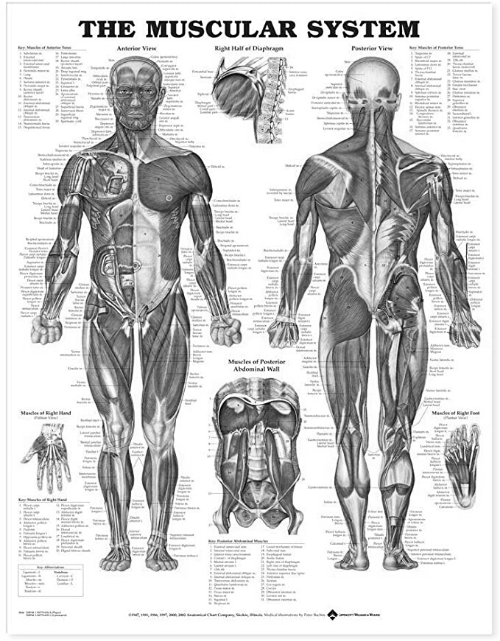The anatomical chart is an enlarged visual depiction of the human body. It can show the entire body or focus on a particular system such as the muscular, skeletal, circulatory, digestive, endocrine, nervous, respiratory, urinary, or reproductive systems. A chart’s large size permits multiple viewers and more detailed inspection, both important elements for teaching classes of students the intricacies of human anatomy.
Anatomical drawings have had a tumultuous past. Whilst anatomical drawings existed during the Greek period, they faded with religious prohibition under Roman, Byzantine and Arabic rule. It was not until the Middle Ages Renaissance and the works of Leonardo da Vinci and Andreas Vesalius that critical examination replaced theory.
By the eighteenth century, advances in printing technology enabled the production of larger, folio volumes with copper plate engravings of even greater clarity of detail over the earlier wood cut blocks. These images often portrayed anatomical models of people suffering corporal punishment, and were a reminder to criminals how their bodies might be treated.
By the late 19th century technological printing processes had advanced sufficiently that charts could be produced easily and cheaply and became an essential addition to the artist’s training, as much as the health professional’s.
Of the multitude of anatomical charts available the most synonymous with the physiotherapy profession are the Muscular System and the Skeletal System.
Whilst charts are used in physiotherapy education they are also used by physiotherapists in practice to educate patients of structure, function and pathology. Many a physiotherapy room has anatomical charts on their walls to serve decorative, credibility and educative purposes.
Description provided by Glenn Ruscoe of Australia.
References:
Sharp H. 2007. A brief essay on anatomical drawing. Historical Collections at the Claude Moore Health Sciences Library. University of Virginia. Accessed online at http://exhibits.hsl.virginia.edu/anatomical/briefessay/ on 15 October 2021.

